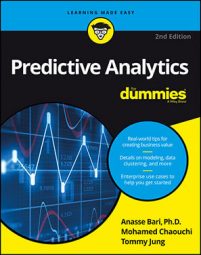The design, production and operation of machinery are multi-trillion dollar global industries. Anticipation of the needs for machinery maintenance and replacement is of great value to manufacturers of all types. Hence, the field of Prognostic and Health Management (PHM) developed over the past few decades. A good example is the book Intelligent Fault Diagnosis and Prognosis for Engineering Systems by G. Vachtsevanos (Wiley ).
The core idea is to service machines in production lines when they need it, not according to an overly conservative time-based schedule. With the development and commercial availability of cheap microelectromechanical systems (MEMS) and other small sensors, and the realization of sophisticated real-time computations, the field of PHM developed rapidly. It takes historical and current data, and uses them to predict when machines will require expensive and disruptive attention. That permits cost-effective planning for the care of critical machinery in diverse production lines. The PHM Society serves such work.
Similarly, predictive analytics (PA), a relatively new field that emerged in recent years, takes big data from many sources, often across complete enterprises or fields. PA processes data with a wide variety of algorithms on diverse computers to predict the times and conditions when actions should be taken. The developed field of PHM and the newer field of PA share common methodologies and goals.Currently, PA and PHM remain distinct from each other. It's possible that PHM will remain separate from PA. It might be more likely that the two fields will interact to their mutual benefit in the coming years. The economic benefits of such interactions could be substantial for both arenas.
In fact, in 2015 General Motors announced the creation of a prognostic technology that aims to determine whether certain vehicle components need attention and maintenance because of possible future failure.
It is important to note that a prognostics system consists of sensors, data acquisition system, prediction algorithms to perform sensor fusion, and predictive model to interpret the results. Data sources involved in building a Prognostic Health Management System mainly include
- Manufacturer’s data:
- Manufacturer engineering data based on computer models and field experience from other or similar systems.
- Represents the nominally expected performance baseline.
- Data updates accomplished by downloading the latest prognostic routines from a central analysis site database through automated means (telemetry).
- Additional sensor data:
- Oil temperature, air pressures, vibrations.
- Sensor data that include noise as noise could be indicative of the underlying problem.
- Platform CPU data
- Many algorithms have been used in prognostic systems:
- Linear Regression.
- Time series analysis.
- Bayesian Dynamic linear models. Non-linear regression.

